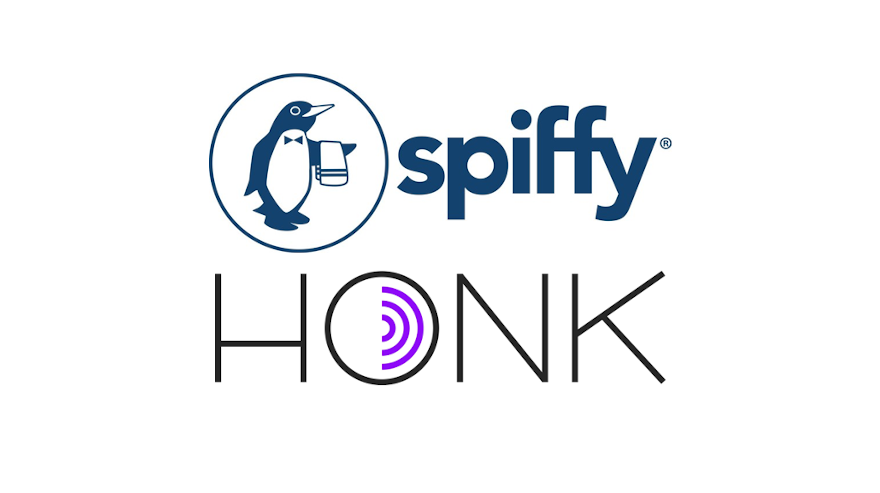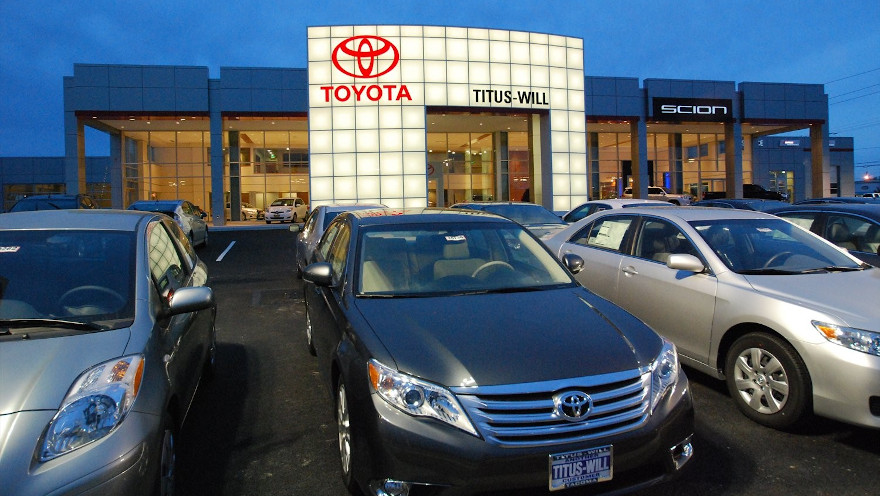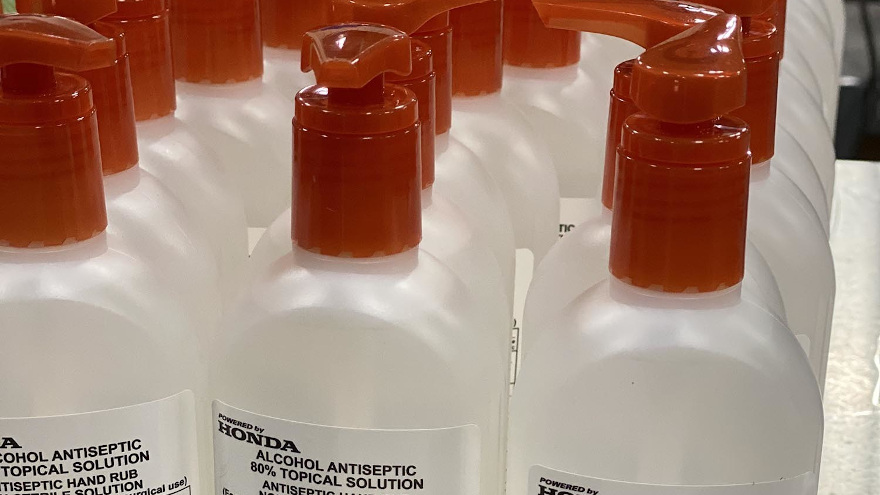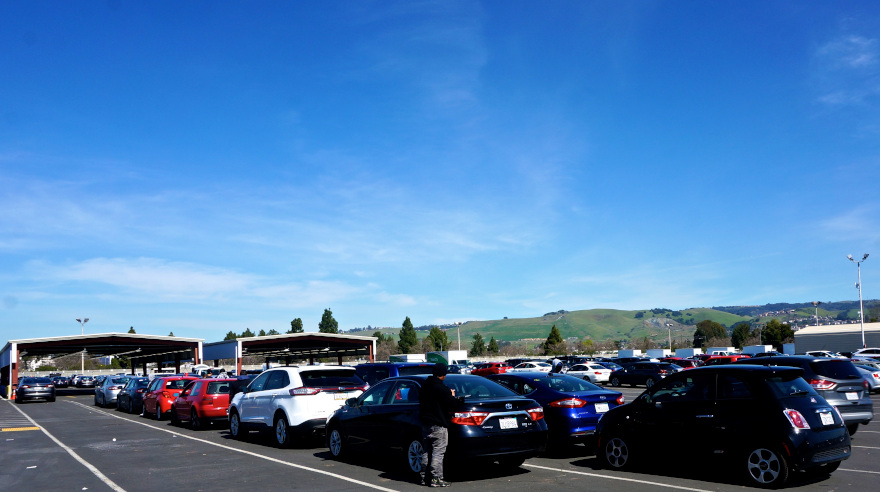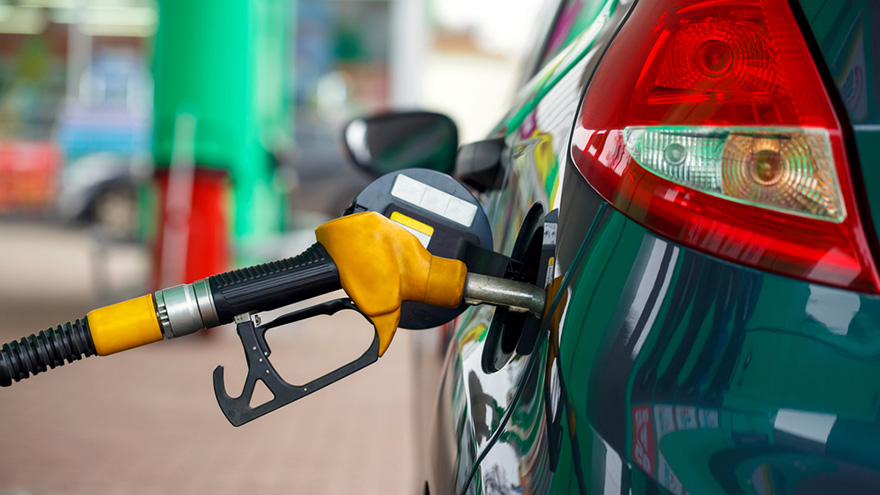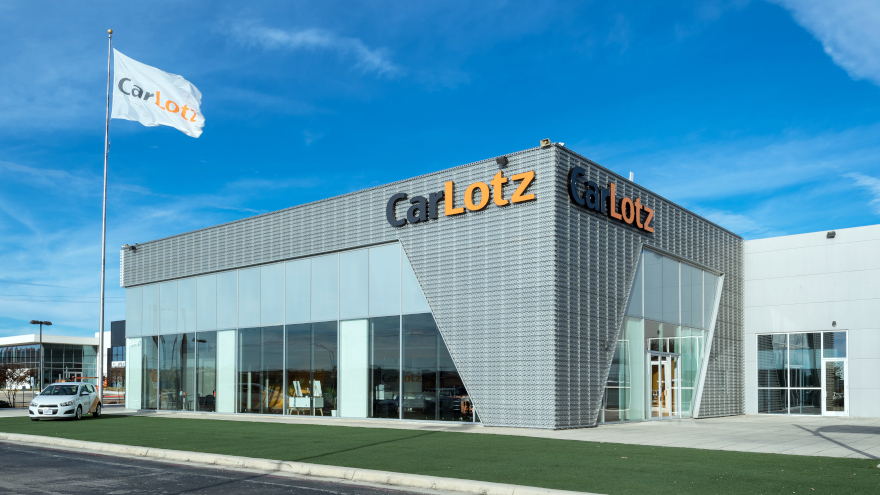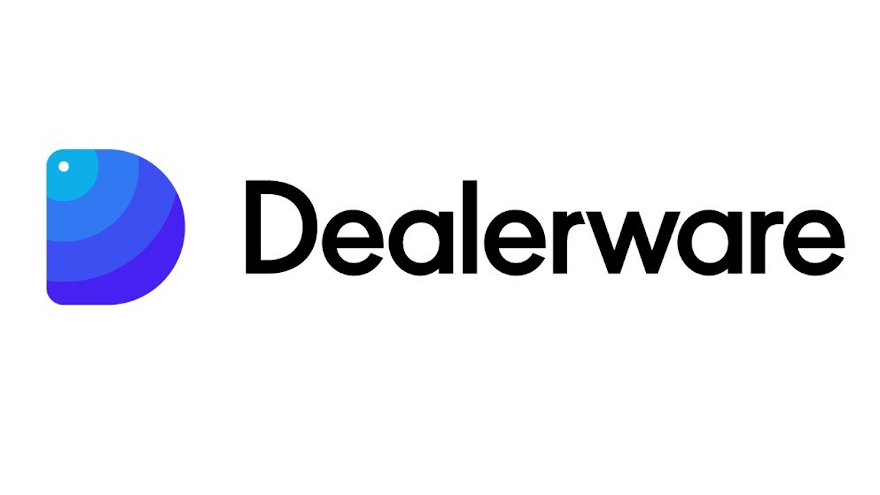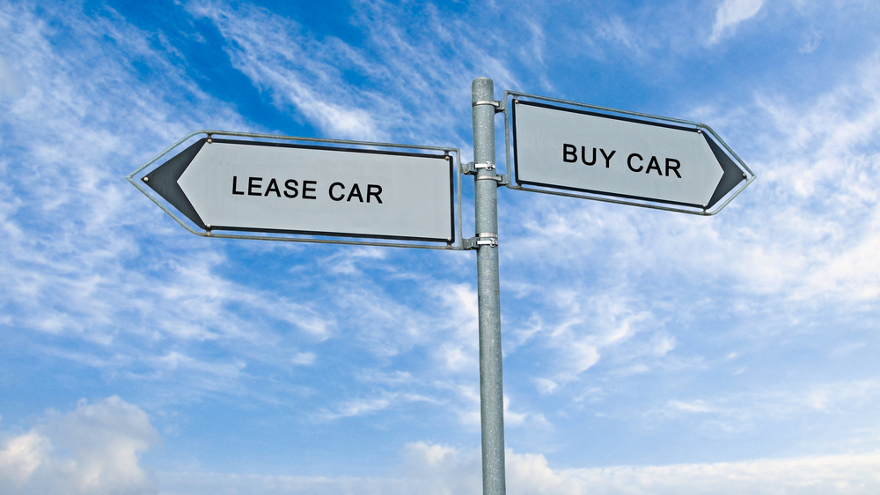During a year that’s already included an acquisition, an office opening and an investment from a venture capital provider, Spiffy’s active 2020 continued Tuesday with a partnership announcement with HONK Technologies, a platform connecting drivers, towing professionals, and insurers, has partnered with,
The provider of on-demand car care, technology and vehicle disinfection services and products explained this new agreement helps insurance providers protect policyholders by ensuring HONK’s service provider network has consistent access to EPA-approved, hospital-grade disinfection solutions to sanitize their tow trucks on a regular basis with 99.999% effectiveness without causing harm to people or vehicles.
The companies acknowledged COVID-19 created a run on disinfectant products, making them difficult to find, and many have harsh chemicals that discolor dashboards and seats in tow trucks. The partnership provides HONK’s service provider network of more than 75,000 vehicles with direct e-commerce access and exclusive discounts at Spiffy’s Disinfection Store.
“Spiffy is excited to partner with HONK to disinfect and protect tow vehicles,” Spiffy chief executive officer Scot Wingo said in a news release. “Our solutions help keep drivers safe while ensuring that policyholders are protected during roadside claims, setting HONK and its customers apart.”
In that news release, Tyler Mortvedt of Central Iowa Towing and Recovery described what this development means for his operation.
“We have always maintained a clean fleet of tow trucks but now during the pandemic, it requires an entirely different standard,” Mortvedt said. “Having consistent access to safe, American-made, hospital-grade disinfectant gives us comfort and security, knowing we’re keeping our tow operators and customers protected.”
HONK executive vice president of partnerships Rochelle Thielen elaborated about why the company made this connection with Spiffy.
“As a result of the current pandemic, our insurance carrier clients are continually asking us about standards for vehicle cleanliness,” Thielen said. “We’re proud to respond with this vital partnership, making HONK the first in the roadside industry to enable continuous access to the highest quality professional chemicals that destroy COVID-19 and other pathogens to both our service providers and our insurance clients, for use across all parts of their businesses.”
Tuesday’s partnership announcement continued a string of developments for Spiffy, one of this year’s Emerging 8 honorees set to be a part of the Automotive Intelligence Summit on tap for Aug. 17-19 in Raleigh, N.C.
Back in January, Spiffy expanded into the tire business, and a month later the company opening an office in Silicon Valley.
Then in March, Spiffy landed a strategic investment from the venture capital arm of Shell. And last month, Spiffy acquired Carmacy, which provides preventive fleet services such as oil changes, tire rotations and repair.
Editor's Note: This is story is part of our upcoming Leading Dealer Groups print edition of Auto Remarketing. This early look at that content is being offered to CMG Premium subscribers. The Leading Dealers Groups print edition of AR will be released in July.
Like many dealers across the U.S., Dawn Walston and the team at Titus-Will Toyota in Tacoma, Wash. — which is part of the Titus-Will Automotive Group — has faced significant headwinds from the COVID-19 pandemic.
But as dealership operations began opening back up in Washington state in May, albeit with strict regulations, some bright spots emerged for the Titus-Will team, including its used-car operations.
Walston, who is the vice president and general manager of Titus-Will Toyota, joined the Auto Remarketing Podcast in early June to talk about how the dealership and dealer group has dealt with the challenges from the pandemic as well as how business is bouncing back.
As to how the used-car side has fared for the group as business improves, Walston said: “Actually, that’s been probably the most significant improvement … And I don’t know if it was the additional federal money that was coming or the stimulus checks, but customers were really on the hunt for that car that was under $15,000, $10,000 — the lower-priced units.
“We were actually selling out of those … we did just as much in all of our used-car locations as we did last May without the COVID-19,” Walston said. “So, it was constantly keeping inventory fresh.”
One of the concerns in March and April was used-vehicle inventory sitting stagnant on lots. Titus-Will was not purchasing any vehicles and they also were not getting any trade-ins, Walston said.
“We kind of went into March with a volume of inventory. So, when the dam opened a little bit, then all of a sudden, customers are online, at home, doing their research, and then buying,” Walston said. “So, May turned out to be much better than anybody anticipated, not only in the new-car arena, but used, especially. Helped clear a lot of aging inventory.”
Of course, finding used inventory can be a challenge these days, with the lack of trade-ins and scaled-back conditions at auctions, particularly in Washington state. In addition to tapping into sources like rental-car companies and leased vehicles, Titus-Will turned to buying vehicles directly from consumers and through its peer dealer network.
“We developed a buying center on our websites, letting customers know if they needed to sell their vehicle, that we were available,” Walston said, also noting that they were buying cars from other dealers through various networks.
Though they were not buying as many cars in general, Walston said that, “we find that a lot of times … the best sources to buy inventory is from your local community and the dealers that you do business with.”
While those in the auto industry are well-aware that consumers can sell their cars to dealerships without making another transaction, the general public might not be as aware. Educating consumers about that has been a focal point.
Walston said that, “we have taken great strides this last year to really educate customers that we are a great buying center for them … even my family and friends who have known me in this business forever still say, ‘So, you don’t have to trade it in? You just buy it directly from me?’”
She later added: “We’ve been trying really hard, by having a buying center or a website dedicated in that, to send that message” that they do purchase vehicles from consumers.
“And sometimes, we’re in the best position, because we’re going to write you a check and it’s going to clear. And you don’t have that one-on-one that you have to do with a regular person,” Walston said. “So, it’s been helpful and we’ve noticed, especially with people trying to part (with vehicles) financially, it’s a tough spot everybody’s in right now. And so, if they have that extra car that they don’t want to cover insurance on or pay for, then we’re a great source for them.”
The full podcast with Walston can be found below:
As part of an industry-wide effort to help alleviate the effects of the COVID-19 pandemic, Honda and General Motors announced on Monday that they are producing nearly 12,000 gallons of hand sanitizer through their Fuel Cell System Manufacturing (FCSM) partnership.
According to a news release, the hand sanitizer will be used by both companies at their facilities throughout the region, and Honda is donating 3,750 bottles to health care facilities in Ohio and Michigan this week.
The OEMs indicated the hand sanitizer is being made at the Brownstown, Mich., facility where the FCSM team has been working on the development of fuel-cell fuel stacks for the next generation of hydrogen-powered cars. Using an apparatus designed to manufacture the electrodes used in the fuel cells, the automakers explained the team developed a process to re-purpose the equipment to produce a hand sanitizer that would allow employees and health care professionals to work more safely.
Honda said it will donate nearly 75% of its allocation of the hand sanitizer, packaging the product in easy-to-use nine-ounce bottles for health care facilities.
On Monday, Honda made the first such donation of 1,250 bottles each to ProMedica Toledo Hospital in Toledo, Ohio, Memorial Health in Marysville, Ohio and the DMC Children’s Hospital of Michigan in Detroit.
“It is inspiring to see how the automotive industry continues to find new and innovative ways to help society during this crisis,” said Cathy McEvilly, senior vice president and general counsel of Honda North America.
“The commitment shown by Honda associates and their counterparts at GM is a source of pride to us and we are happy to provide something to help the brave health care professionals fighting this pandemic every day,” McEvilly continued.
The companies went on to mention Packaging Corporation of America donated the packaging needed to ship the product, and the FCSM team worked with other companies to handle the bottling.
In addition to donating hand sanitizer to health care facilities, Honda added that it will provide 1,500 gallons of the product for use in its manufacturing plants, as part of the effort to provide a clean and safe environment for its associates.
UPDATED with new timing on second round of pilots.
Manheim is piloting the return of in-lane bidding at five of its auctions this week, with three more set to follow soon, a company spokesperson told Auto Remarketing via email.
The first of these sales is at Manheim Dallas on Tuesday. Others that will pilot in-lane bidding this week are Manheim Kansas City, Manheim Kansas City, Manheim Dallas-Fort Worth, Manheim Darlington and Manheim Tulsa.
Manheim Orlando, Manheim Central Florida and Manheim Lakeland are slated to pilot in-lane bidding in coming weeks.
Manheim’s auctions have been running in Simulcast-only mode since early in the pandemic. With the in-lane bidding pilot, these select auctions will move into the Digital Block format, where the vehicle remains stationery and bidders view the car on a screen.
In an update letter shared June 9, Manheim president Grace Huang said of this pilot: “This change will require strict protocols, including redesigned auction blocks with Plexiglas guards, new distancing requirements and enhanced safety measures. Should social distancing violations occur, or we experience a rise in COVID-19 hot spots, this pilot program will be suspended.”
Huang and Patrick Brennan, who is senior vice president of Manheim Marketplace, discussed the potential for bringing back in-lane bidders during an interview on June 5.
“We’re probably going to be putting some plans together really centered on and led by safety and social distancing and masks and all sorts of other safety protocols. We want to make sure that we can follow, our team members can follow and our dealers can follow (those measures),” Brennan said at the time. “And we’re probably going to put some pilot locations out there near the end of the month and explore what that looks like.
“That one’s going to be a tough one. We’ve certainly seen this industry for many many years not be able to social distance and follow those types of things — not that we needed to, back then, per se,” Brennan said.
“But it’s going to be very important, based on some of the things we’ve seen in the industry that’s taken place here in the last few weeks to make sure that we do this in the right manner,” he said. “We’re asking for a little bit more patience from our dealers, but we think we’ll be moving in that direction as the summer rolls along here, as we learn a little bit more about it.”
Dealership service drives already might be seeing fewer appointments for maintenance work such as oil changes and brake jobs because their customers aren’t using their vehicles as much because of the coronavirus pandemic.
New survey data on American driving and vehicle fueling habits shows that trends with that part of dealership operations might not be changing soon.
HONK Technologies, which provides a roadside assistance platform that connects drivers, towing professionals and insurers, found that motorists are fueling up far less frequently than they did prior to the COVID-19 pandemic. The results show that most American drivers are reluctant to resume normal activity despite quarantine sanctions being loosened or lifted.
Prior to the pandemic, HONK Technologies said 56% of survey respondents filled up at least once a week, and 11% filled up once a month or less.
Currently, HONK Technologies indicated just 25% of respondents fill up at least once a week, and 45% fill up once per month or less.
Additionally, when motorists do drive somewhere, few are making trips beyond what is necessary for day-to-day needs, according to HONK Technologies.
When asked what destinations they had driven to in the prior seven days, 83% of survey participants said they had driven to a grocery store, pharmacy or some other store for necessary supplies. Just 17% had gone shopping, 21% to outdoor recreation activities, 25% to a restaurant or cafe, 31% to visit family or friends and 32% to go to work.
HONK Technologies discovered just 4% of respondents did not go out at all.
The online survey of 719 motorists was conducted by HONK Technologies from May 15 through June 4, 2020.
HONK Technologies runs a large GPS-enabled network of service vehicles in the U.S. and Canada.
To learn more, visit https://www.honkforhelp.com.
Editor's Note: This is story is part of our upcoming Leading Dealer Groups print edition of Auto Remarketing. This early look at that content is being offered to CMG Premium subscribers. The Leading Dealers Groups print edition of AR will be released in July.
Like many companies in the retail auto space, CarLotz had a strong start to 2020 and had big expectations for an “absolute blowout month” in March, which is typically a vibrant one for the car business, in general.
Then the COVID-19 pandemic hit, leveling a blow to entire industries, including retail and wholesale auto, the two segments in which CarLotz operates.
“Man, it was very scary for several weeks,” co-founder and chief executive officer Michael Bor said in a June interview for the Auto Remarketing Podcast.
“Fortunately, on the retail side of this industry, it was actually a pretty quick and intense disruption … and we emerged from it very quickly, but we didn’t know that going in,” he said.
CarLotz, which sells vehicle consignment from consumers and commercial accounts to retail customers at its eight locations across five states, had to make some tough calls and business model adjustments to adapt to COVID-19.
In the early stages of the pandemic, CarLotz had a small round of layoffs and “massive” furloughs, Bor said. Their team went from approximately 160 to 30. Stores has just one or two people to maintain the safety of inventory. Management kept in touch with teammates on a weekly or even daily basis through townhalls.
(Most of the furloughed team members have returned. CarLotz anticipates having them all back by mid-July)
CarLotz also made a digital shift, leaning on its tech team, which remained entirely intact.
“We really pointed them towards getting us to this next level of automation, online selling and buying, paperless, touchless (processes) — everything that at the end of this, might end up being just a gimmick, but it’s actually great for the consumer,” Bor said.
“So, in very short order, we went from being a traditional car dealer with obviously a different model, where we’re consignment, to essentially we have the ability for you to buy a car from our store without ever talking to us, online without ever signing a document,” Bor said. “It’s all touchless, paperless, online.
“That happened very quickly. We were making strides. We started that strategy last November. And so, we kind of lucked out that it was ready to go right around the time COVID hit,” he said.
While consumers have the ability to have vehicles from CarLotz delivered to their home via online purchasing, “not as many people use it as you’d think,” with folks still preferring to come to the dealership.
“And our thought there is that we really want to meet the car buyer where they want to be in terms of how they want to transact for a vehicle,” Bor said.
“Carvana and Vroom have done an awesome job of selling a tremendous number of vehicles online. But the reason that 100% of their deals is because there’s no other option. With us, you can buy a car 100% online, but you also have the option of coming in and looking at it. And we think that hybrid model gives the car-buyer the ability to meet us where they’d like to be met.”
While CarLotz might ship the occasional car to Maine (where it does not have a location), for example, that’s the exception rather than the rule, with most of its transactions being in-person.
“Although people kind of jump on and off the online train wherever they feel comfortable,” Bor said.
Recoveries vary
Much like wide array in pandemic impacts in individual states, the recovery for CarLotz has varied by the five states in which it operates: Florida, Illinois, North Carolina, Virginia and Texas, Bor said.
Company-wide, CarLotz is “ahead of where we were last June, which is great,” but within those specific markets, they might be behind 30% or significantly ahead.
“There’s been kind of this drop-off and bounce-back at different rates, depending on what market we’re in,” Bor said.
The activity from a consignment perspective also varied. At first, consumer consignment shut down, with many not finding selling their car an essential activity, Bor said.
But on the commercial consignment side, with much of the wholesale auto industry shutting down at the outset of the pandemic, CarLotz saw a “huge boom.”
While auto auctions have since opened back up and prices have been bouncing back, the wholesale auto business had been seeing sell-through rates, vehicle values and wholesale indices decline, “whereas retail pricing really only ticked down a very small single digit percentage,” Bor said.
“Volumes came down for a three- or four-week period, about 60-70% but bounced back up immediately, and as I said, we’re ahead of where we were last year, where pricing didn’t really move,” he said.
The value proposition that CarLotz offers is selling consignors’ vehicles at retail prices. Typically, the “lift” CarLotz is able to get over an auction price is $800 to $1,200, Bor said.
But with wholesale prices falling and retail prices remaining relatively steady, that lift increased to $3,000 to $5,000, Bor said.
“A lot of our accounts that were feeling very stressed because these auctions were shut down or not selling the volumes that they would, they started shifting volume towards us and we were getting tremendous results … It’s kind of glass-half-full, I guess, on this side of it. Our ability to service our commercial accounts was fantastic through this process and they achieved great results, and we’re still seeing that,” Bor said.
CarLotz is also seeing consumer consignment come back in a big way, as comfort levels increase and states begin to open back up. Commercial consignment also helps give CarLotz wider variety in its inventory, as those cars tend to reflect what consumers in the area are driving, Bor said.
What’s on the radar?
Looking forward, Bor said the company is closely watching the wholesale market and is taking a consultative, advisory approach with its clients.
“We think volumes are going to be coming up — consignment volumes to us and to the auction are going to be popping soon. Several of our big accounts, volumes have slowed a little bit because they’re not able to get their accounts into new cars because OEMs were shut down for a while,” he said.
“We feel like there’s a little bit of a backup there, where we’re going to see dramatically increased volumes as the OEMs re-opened and start producing cars again. That is the first step in the supply chain that will allow us to grow inventory,” Bor said. “We think all of our stores will be much, much busier. We’re seeing very strong consumer demand for vehicles, which is great.”
Footprint expansion is also a goal. Bor said he would like to see CarLotz expand to the West, potentially to markets like Denver, Las Vegas or Phoenix, and to the Northeast in markets like New England or the Pennsylvania-New Jersey area.
“We’re very excited about the growth we’ve seen through all this,” Bor said. “I don’t think I’d ever choose to go through this (pandemic), but now being on the other side of it, I recognize the positive qualities that it had on forcing us to be more efficient and more diligent and it’s really kind of created a stronger company.
“We’re very excited to take that forward and continue to grow it.”
Used-vehicle retail sales have struggled in the first half of the year, amid challenges from the COVID-19 pandemic. But bright spots have emerged, including what looks to be strengthening franchised dealer used-car sales in the first half of June, as of press time for this publication.
Just consider these data points from KAR Global’s interactive dashboard.
Used-car retail sales for March 31 were down 60.1% year-over-year. On June 8, they were up 21.5%
Overall, in May, there was a 22.4% year-over-year decrease in overall used-vehicle sales, with new-car sales falling 30%, according to Cox Automotive. But sales did strengthen from April.
The company estimated the overall used-vehicle SAAR for the month at 32.0 million. In May 2019, it was 39.2 million, and in April, it was 27 million
What Cox considers to be the retail used-vehicle SAAR (or sales by franchised and independent dealers only) was at an estimated 16.7 million in May. In May 2019, it was 21.0 million. In April, it reached 14.4 million, so May did mark a month-over-month improvement.
“Overall, used-vehicle demand continues to improve, which has helped stabilize wholesale vehicle prices and reduce the excess supply of used vehicles,” Cox said in an analysis. “The wholesale used-vehicle supply peaked at 149 days on April 9, when normal supply is 23. It was down to 39 days by the end of May.”
Over at J.D. Power, analysts were noticing similar trends. In an early June webinar on that week’s J.D. Power Auto Industry Impact Report, analyst Larry Dixon said: “Used-vehicle sales at franchised dealers have been robust for several weeks now. May closed with used retail sales down just 5% from our pre-virus forecast for the month or 15 percentage points better than new-vehicle sales.
“Sales in several major markets have especially strong, including Dallas, Phoenix, Cleveland, Denver and Tampa,” said Dixon, who is senior director at J.D. Power Valuation Services.
“Dealers in these markets will need to replenish used retail inventory, which will in turn, help support wholesale auction activity and wholesale prices,” he said.
In comments included in an emailed summary of the report’s highlights, J.D. Power vice president of data and analytics Tyson Jominy wrote: “The strong demand for used vehicles is consistent with prior periods of challenging economic conditions.
“Less compelling incentives on new vehicles will further bolster demand for used vehicles and a significant number of households who would have purchased a new vehicle are switching to the used market due to affordability concerns,” Jominy said. “Reduced new-vehicle incentives will also remove a headwind to the maintenance of strong used-vehicle wholesale and retail prices.”
In a Used Vehicle Impact Report looking at the week ending June 14, J.D. Power indicated that franchise dealers’ used-vehicle sales were 11% stronger than what was projected pre-virus. That followed a week when they were up 12% from pre-virus forecasts, beating prior weekly movements, when they fell 3% the week ending May 31 and were static the week of May 24.
“The strong demand for used vehicles is consistent with prior periods of challenging economic conditions,” J.D. Power analysts said in that report. “Further, reduced incentives on new vehicles drove up monthly payments, which further bolstered demand for the affordability of used vehicles.”
Used-vehicle affordability, and slowing new-vehicle supply, was something that Cox Automotive senior economist Charlie Chesbrough addressed in an AIADA AutoTalk webinar in early June.
“There is a lot of activity in the used market. And I think that’s where we’re going to see probably the most activity over the course of the summer, particularly as the new market is facing sort of a new hurdle, which is inventory supply,” Chesbrough said.
He later added: “I think the used market is going to be a real focal point for consumers here over the course of this summer.”
One potential opportunity for the used-vehicle market is the downturn in car segments on the new-vehicle side.
Cars represented less than 23% of the new-vehicle market in May, according to data Chesbrough shared in the webinar.
While some of the overall declines for sales is attributable to several automakers moving away from the car segments and not producing as much, even the car segment product that is available is not generating strong new-vehicle sales, Chesbrough said.
“It may be that those car buyer consumers have been hit by this virus particularly hard and they’re being chased out of the new-vehicle market,” he said. “Unfortunately, I don’t have hard data to defend this, but if I had to speculate, I think that there is some real opportunity within the used-car market that these car buyers are seeing value to get a 3-year-old SUV that (they) couldn’t afford in the new market, but (they) could afford it in the used market.
“And so, when I’m looking for a less-than-$30,000 product, I think many of those consumers are leaving the new-car segment and moving into the used SUV segment.”
There’s also a lot of potential in what Cox Automotive describes as the “gently used” segment, or vehicles zero to 4 years old. These vehicles are typically higher-priced and many of their buyers can afford to buy new but chose to purchase used, instead.
When looking at the combined sales tally of new-vehicle sales and gently used vehicle sales, the share commanded by gently used has been on the rise since 2013, when it was just over 33%, according to Cox Automotive. This year, their share is expected to reach close to 44%.
Amid the rising new-vehicle prices and fewer products under $30,000, “the way they’re providing that price point to consumes out there is in the used market,” Chesbrough said. “That if you’re looking for a low-cost vehicle, well, the industry’s saying you’ve got to into the used market to get that.
“So, as a result, there’s a lot more business that’s happening” in the pre-owned market.
And with consumers now focused on value and deciding to spend less, “these gently used vehicles may become a real threat to the new-vehicle market, because I can buy a 3-year-old version of a new vehicle for a 30, 40, 50% discount.”
And often those 3-year-old or other later-model vehicles end up as certified pre-owned vehicles, which was one of the bright spots in May’s used-car market.
According to a Cox Automotive analysis of data from Motor Intelligence, there were 237,495 CPO sales for the month.
While that’s down 6% from May 2019, the May 2020 certified sales tally is 87% stronger than April’s, Cox said.
What’s more, that year-over-year decline in May is a substantial improvement over the 46% year-over-year decrease in April. In March, certified sales were down 40% year-over-year, according to the Cox analysis of Motor Intelligence data.
That followed what was another record start to the year.
The first month of 2020 was the strongest January for the certified pre-owned market in a decade, according to a previous report from Cox covered in Auto Remarketing. February then beat those sales by 10%.
Year-to-date sales CPO are at 977,333 units, a 16% decrease, according to latest analysis.
More than two-fifths (44%) of those sales are from Toyota, Honda, Chevrolet, Ford or Nissan, Cox said. A third come from Toyota, Honda or Chevrolet, with those brands representing the largest players in the CPO market, according to the analysis.
After strong improvements in May, look for a gradual rebound in auction prices during the back half of 2020, says J.D. Power Valuation Services, which released its monthly Guidelines Plus report on the used market on Thursday.
The J.D. Power Used Vehicle Price Index was at 113.2 for May, up 8.3% month-over-month.
“Wholesale auction prices improved for the sixth consecutive week through the week ending May 31. Prices grew by an impressive 14 percentage points during this time which is a substantial improvement from the 16% trough recorded the week ending April 19,” David Paris, executive analyst at J.D. Power Valuation Services, said in a news release.
“While the rate of improvement is expected to slow due to an anticipated rise in wholesale supply in June and July, auction prices are expected to steadily recover over the remainder of 2020, finishing the year down by approximately 2% to 4% vs. 2019.”
The improvements in May have continued in June.
According to the Used Market Update blog post on Wednesday from Larry Dixon of J.D. Power Valuation Services, the weekly wholesale auction price index (for vehicles up to 8 years old) for the week ending June 14 was 102.8.
That’s up from the pre-virus forecast of 96.3.
It also marks the eighth straight gain in the weekly wholesale auction price index, which has climbed 18 points since bottoming out the week of April 19, according to that post.
Meantime, auction sales volumes remain on the upswing, as well. According to J.D. Power, there were 107,000 auction sales of vehicles up to 8 years old the week ending June 14.
That beats pre-pandemic projections (102,000) and prior-week figures (101,000).
“Sales over the past two weeks have exceeded 100,000 units per week, the first time this has occurred in three months,” Dixon writes in the post, referring to the weeks ending June 14 and June 7.
Similarly, data from the KAR Global interactive dashboard shows improvement in aggregate wholesale buyer activity.
The dashboard, which shows daily comparisons to the same day in 2019, indicates that that wholesale buyer activity dropped more than 81% year-over-year on April 5, which was the trough in KAR’s data set.
On June 15, that gap had narrowed to 9.6%.
Looking at the Manheim Used Vehicle Value Index for mid-June, wholesale prices in the first half of the month were up 6.6% from May.
The mid-month index itself was up 4.0% year-over-year at 146.1.
“If the mid-month value of the Manheim Index holds for the full month, the Index will hit an all-time high,” Cox Automotive analysts said in the report.
Dealerware is set to launch a new contactless contracting feature on Wednesday as customers will receive the new feature via a software update to Dealerware’s Mobile Contracts product.
With contactless contracting, the connected car platform provider explained that dealerships can send loaner vehicle agreements to customers via text message. Customers can review the terms of the agreement and sign for the vehicle on their own device, reducing the need for dealership employees and customers to physically share space, share devices or use impractical workarounds to complete paperwork.
From the service bay to the sales floor, Dealerware said contactless contracting can enable dealerships to adhere to social distancing guidelines in order to protect the health of both employees and customers. With flexible contracting the company insisted retailers can be empowered to deliver exceptional customer service experiences such as touchless pickup and delivery, and unaccompanied or at-home, extended test drives.
Dealerware went on to say dealerships can confidently use contactless contracting to satisfy evolving customer needs while potentially increasing customer satisfaction for service appointments as well as improve the overall sales experience.
“Automotive retail is changing faster than ever before, and while our primary goal with contactless contracting is to address a need for safer, more comfortable customer interactions, we also wanted to equip our customers to meet new consumer expectations for more flexible sales and service experiences,” Dealerware president Russell Lemmer said.
The new contactless contracting functionality will be a feature within Dealerware’s Mobile Contracts product, which already can allow dealerships to simplify customer service and increase their customer satisfaction (CSI) scores.
In addition to Mobile Contracts, Dealerware also offers connected car services and toll services that can empower dealerships to recover the costs of operating a courtesy loaner fleet.
On average, retail partners on the Dealerware platform recover $65/vehicle per month from fuel, toll, and damage costs while increasing CSI scores an average 27 points, according to J.D. Power.
Demand for flexible, mobile-friendly fleet management solutions like Dealerware is evident as automotive retailers increasingly look for ways to interact with customers beyond the dealership lot. Dealerware emphasized its recent growth — 100% year-over-year in 2019 and a 20 percent increase in daily active users since the start of 2020 — further illustrates the rapid innovation happening at dealerships across North America.
For more information about contactless contracting, visit https://go.dealerware.com/contactless-contracts. For more information about Dealerware’s suite of fleet management tools and their impact, visit www.dealerware.com/solutions.
If consumers aren’t securing a lease from a franchised dealership as much because of the coronavirus pandemic, they might be using alternatives to land a vehicle lease, based on the newest information from Experian and Swapalease.com.
Experian’s latest State of the Automotive Finance Market Report showed a decrease in leasing year-over-year, with 24% of new vehicles being leased in April, compared to 30% in April of last year.
Meanwhile, Swapalease.com reported vehicle lease credit applicants on its site registered an approval rate of 68.6% in May, a significant increase from the April rate of 63.8%. Site officials explained the increase is likely related to an influx of online shoppers who are seeking alternative means of vehicle acquisition during COVID-19.
“Shoppers continue to seek out online marketplaces in lieu of dealership visits,” Swapalease.com said.
Secondary markets such as Swapalease.com can provide automotive shoppers with feasible alternative solutions that fit their current lifestyle, which may be altered by shelter in place or work from home arrangements.
Despite unusual circumstances lease credit approval rates have remained stable when compared to data from the month of May in 2019 and 2018. In 2019, 72.4% of applications looking to take over someone else’s lease were approved. In May of 2018, only 67.9% of applicants were approved.
“We’re seeing a significant shift in the way consumers are shopping for their next vehicle and an increase in shoppers who are seeking shorter-term financial commitments with lower monthly payments,” Swapalease.com executive vice president Scot Hall said.
“Alternative marketplaces like Swapalease.com may be more appealing to individuals who find themselves temporarily in a more challenging financial situation,” Hall continued.
Perhaps compounding the financial situation is the rise in monthly payments for leases. Experian discovered that the average monthly payment for a lease booked during the first quarter came in at $466, a rise of $9 year-over-year. The average lease term remained nearly stable at 36.76 months, according to the newest update.
As far as the vehicles being leased, Experian also shared the Top 10 models with the most market share in Q1. The list included:
1. Honda Civic: 3.5%
2. Honda CR-V: 2.8%
3. Chevrolet Equinox: 2.6%
4. Toyota RAV4: 2.6%
5. RAM 1500: 2.5%
6. Jeep Grand Cherokee: 2.3%
7. Ford Explorer: 1.8%
8. Toyota Corolla: 1.8%
9. Honda Accord: 1.8%
10. Nissan Rogue: 1.7%

